Hebrew: אלון מצוי, Arabic: بلوط، سنديان دائم الخضره
| Scientific name: | Quercus calliprinos Webb | |
| Common name: | Kermes Oak, Palestine oak | |
| Hebrew name: | אלון מצוי | |
| Arabic name: | بلوط، سنديان دائم الخضره | |
| Plant Family: | Fagaceae, אלוניים |
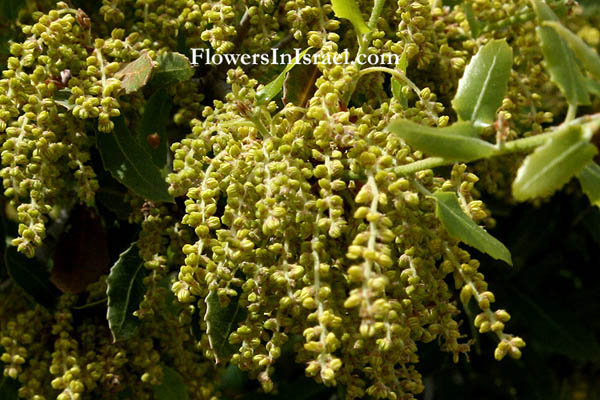
|
| Life form: | Phanerophyte, tree | |
| Spinescence: | Leaves | |
| Stems: | To 20 m | |
| Leaves: | Alternate, entire, dentate or serrate, spinescent; a stellate pubescence beneath | |
| Flowers: | Green | |
| Fruits / pods: | Acorn ovoid, 2 cm long, 1.5 wide; enclosed 1/2 to 2/3 by cup; cup with spiny, stiff, spreading or recurved scales | |
| Flowering Period: | February, March, April | |
| Habitat: | Mediterranean maquis and forest | |
| Distribution: | Mediterranean Woodlands and Shrublands, Semi-steppe shrublands, Montane vegetation of Mt. Hermon | |
| Chorotype: | Mediterranean | |
| Summer shedding: | Perennating |
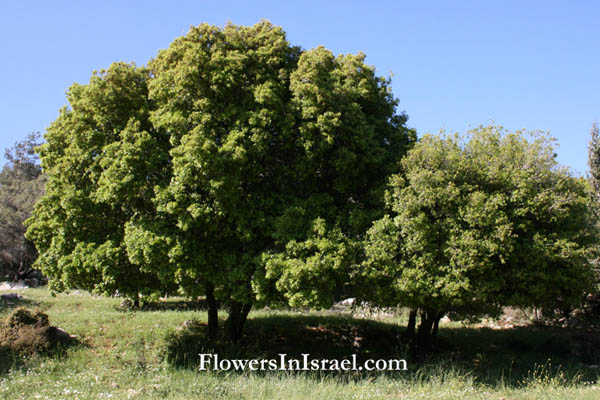
Derivation of the botanical name: Quercus, Latin for oak. calliprinos, callos, καλλοϛ, beauty; prinos, πρινοϛ, a tree, variously ascribed to Quercus ilex, Quercus coccifera, Ilex aquifolium; beautiful oak. The Hebrew name: אלון, alon, properly 'a large strong tree', and like אלה ( = terebinth; oak) derived from אול, oel (= to be strong); related to Akkadian: allanu. The different Hebrew words used for oak in the Bible (O.T.) are "êl", "êlon", "îlan", "allah", "allôn", and "êlâh" or "âlâhim" (see: pistacia).
The Palestine Oak (Quercus calliprinos) is closely related to the Kermes Oak (Quercus coccifera) of the western Mediterranean, and is treated as a subspecies or variety of it by some botanists. The Kermes Oak is distinguished from it by its smaller size (usually shrubby, not over 10 m) and smaller acorns less than 2 cm diameter. The Quercus calliprinos is the most predominant of the three oak species growing in Israel; the others are the Tabor (Quercus ithaburensis) and Aleppo (Quercus infectoria) oaks. The Quercus calliprinos is found on the most common type of mountain soil, the Terra Rossa. The parent materials of Terra Rossa are dolomite and hard limestone, the soil depth varies from shallow to deep (0.5-2m). It enjoys a xeric moisture regime, deep in hilltops and shallow in sloppy mountainous areas. The soil has a reddish brown color. This tree is the major evergreen element in the oak-pistachio woodlands of Israel’s Mediterranean climatic zone. They usually appear as a large bush, though some tall individual trees do exist, particularly those that remained for many years because they were revered by local residents as “holy trees.” Apart from the Quercus calliprinos, the dominant constituent of this oak forest, are the Pistacia palaestina, Laurus nobilis, Arbutus andrachne, Crataegus aronia and Ceratonia siliqua. The pine trees form the upper story of the forest while the Quercus calliprinos and other evergreen shrubs form the lower one. A Quercus calliprinos forest grows in the areas at an altitude of higher than 200 meters and in the damper parts of the mountain. There are beautiful groves on the slopes above Kibbutz Yagur, near Nahal Kelah (known as Little Switzerland), and in Keren Hacarmel. The trees are relatively small and have only one trunk. The leaves are stiff, shiny dark green with sharp spines around the edges. On the same tree are male and female flowers: The male flowers grow as a catkin, a long cylindrical cluster of small flowers without petals. The female flower grows as a nut called an acorn, borne in a cup-like structure known as a cupule. Oaks were one of the sources of tannin necessary for tanning hides. Tanning is mentioned in Acts 10:6. The Kermes Oak was historically important as the food plant of the Kermes insect from which a red dye was obtained and used toward the end of the second Holy Temple (70 CE). The color red, translated as 'scarlet,' or 'crimson,' in Hebrew is usually referred to as 'shani' or more fully as 'tolaat shani.' (In Chronicles, the color is referred to as karmil: "with purple and blue and crimson yarn", II Chron. 2:6,13). The "scarlet worm", Tola`ath shani, "scarlet," Cermes vermilio is a scale-insect which feeds upon the oak and it is not a worm. The female is wingless and adheres to its favorite plant by its long, sucking beak, by which it extracts the sap on which it lives. After once attaching itself it remains motionless, and when dead its body shelters the eggs which have been deposited beneath it. The males, which are smaller than the females, pass through a complete metamorphosis and develop wings. The dye is made from the dried bodies of the females. The word 'crimson' comes from kermes, although the color produced was more of an orange-red. The Cermes vermilio also gave rise to one other word for red, vermillion (Latin "worm-colored", from vermiculus, the Latin term for the kermes). Vermilion, in Hebrew shashar, also appears two times in the Bible (Ezek. 23:14 and Jer. 22:14). This red color was early known; "…and took a scarlet thread" (Gen 38:2). It was one of the colors of the ephod (Exo 28:6), the girdle (Exo 28:8), and the breastplate (Exo 28:15) of the high priest. It is also mentioned in various other connections (Jos 2:18; Sa2 1:24; Lam 4:5; Nah 2:3). A scarlet robe was in mockery placed on our Lord (Mat 27:28; Luk 23:11 Come now, let us reason together," says the LORD. they shall be as white as snow; though they are red as crimson, they shall be like wool (Isa 1:18). Scarlet and crimson were the firmest of dyes, and thus not easily washed out. In the Scriptures the species of oak are not distinguished from one another: Bible resources:
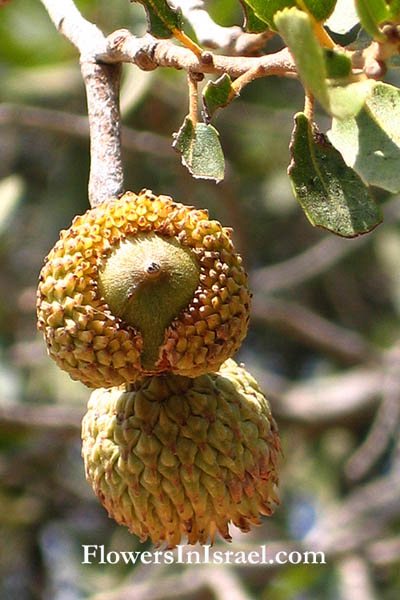
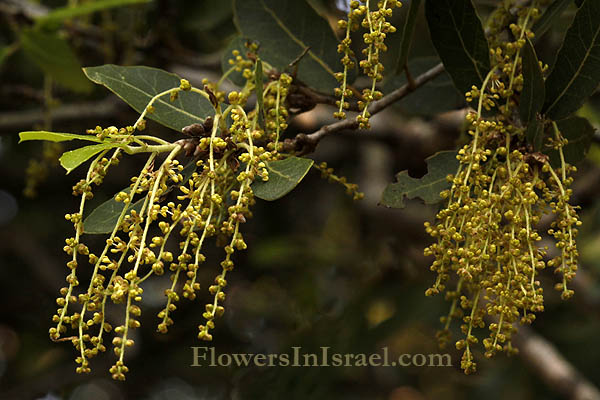
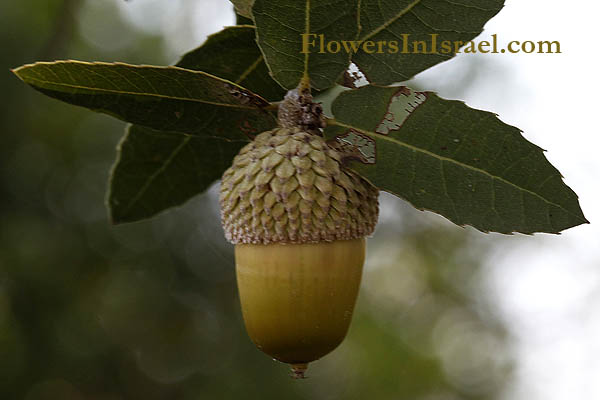
Bibliographic References Liber Domínguez Espí (july 2017). Influence of NP-fertilization and water stress on the fungal root colonisation of Quercus coccifera L. subsp. calliprinos. University of Natural Resources and Life Sciences (Universität f. Bodenkultur Wien) |